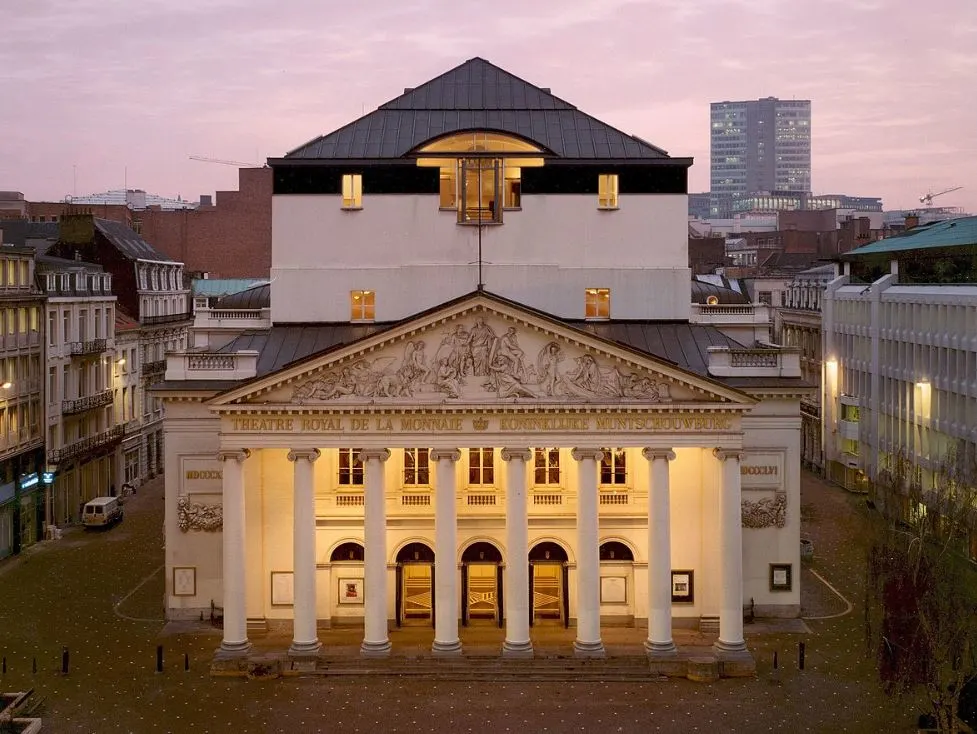Some of the most fascinating structures in the world were built as the venue for performances of opera. The architects who designed these buildings usually don’t shy away from using exuberant decorations as well.
This means that some of the most famous opera houses in the world are also some of the most iconic landmarks in major cities all around the world.
In this article, you’ll discover some of the most amazing places to enjoy opera and other performing arts all across the globe.
1. Sydney Opera House, Sydney, Australia
The Sydney Opera House isn’t just one of the most famous structures and tourist attractions in Sydney, it’s also one of the most iconic landmarks in the world. It’s located in the Sydney harbor and features multiple performance venues. This means that it’s an incredibly busy location, hosting over 1,500 performances every year attended by over 1.2 million visitors. All venues combined offer a seating capacity of 5,738.
Building the structure wasn’t exactly easy because even though construction had started in 1959, the building was only completed in 1973. After all, the architect resigned halfway. The remarkable architecture and the unique location in Sydney make this a must-visit attraction whenever you’re in the city.
Official website: Sydney Opera House
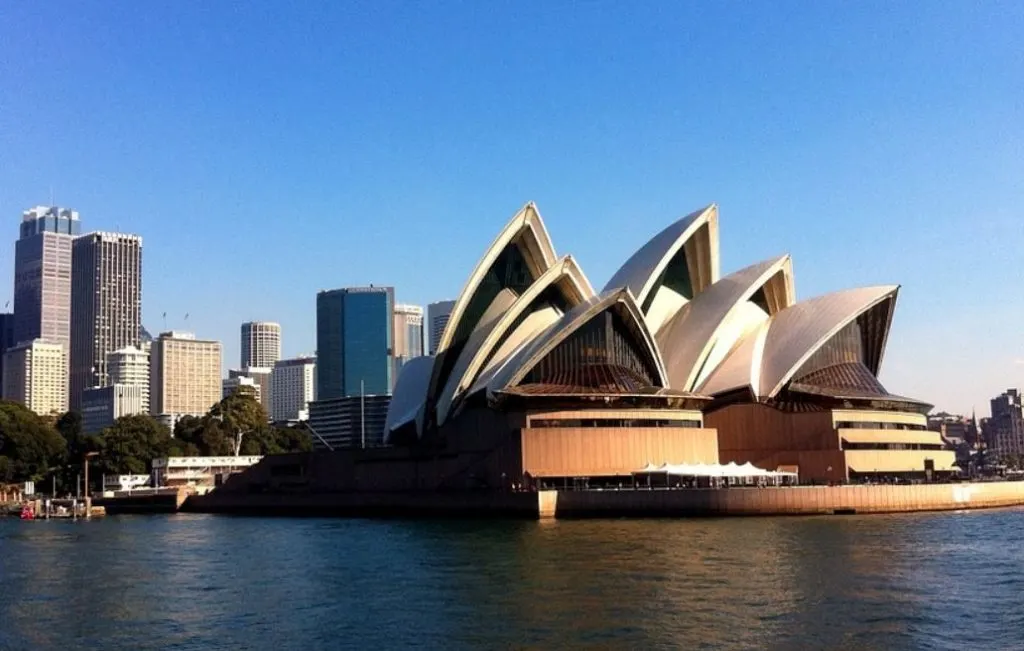
2. Palais Garnier, Paris, France
From the most iconic to the most exuberant opera house in the world, that’s a great transition going from the venue in Sydney to the Palais Garnier in Paris, France. The building was named after its architect, a man named Charles Garnier. He won an architectural competition in the early 1860s and the structure was eventually built for the Paris Opera between 1861 and 1875.
Garnier referred to the style he used to design the building as the “Napoleon III Style,” a reference to Emperor Napoleon III who commissioned the building. The level of ornamentation on both the exterior and interior of the building is astounding and makes you stand in awe. The size of the building makes it all the more remarkable that the astonishing auditorium only has 1,979 seats.
Official website: Palais Garnier Paris
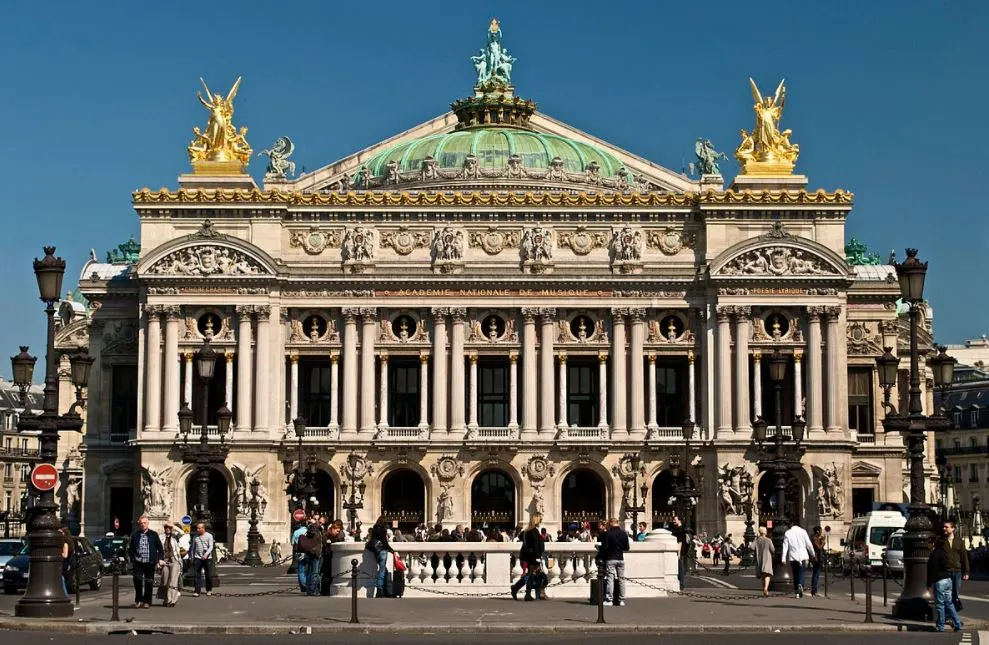
3. Vienna State Opera, Vienna, Austria

The Vienna State Opera is officially known as the “Wiener Staatsoper” and was the first building to be constructed on the Vienna Ring Road was built in the second half of the 19th century to replace the old city walls. The building was completed around the same time as the Palais Garnier between 1861 and 1869.
The opera house in Vienna is world-famous for being the home of the Vienna Philharmonic, one of the most renowned orchestras in the world. It’s also the home of the Vienna State Ballet and the venue of the popular Vienna Opera Ball. The auditorium of the venue offers 1,709 seated and 567 standing places.
Official website: Wiener Staatsoper
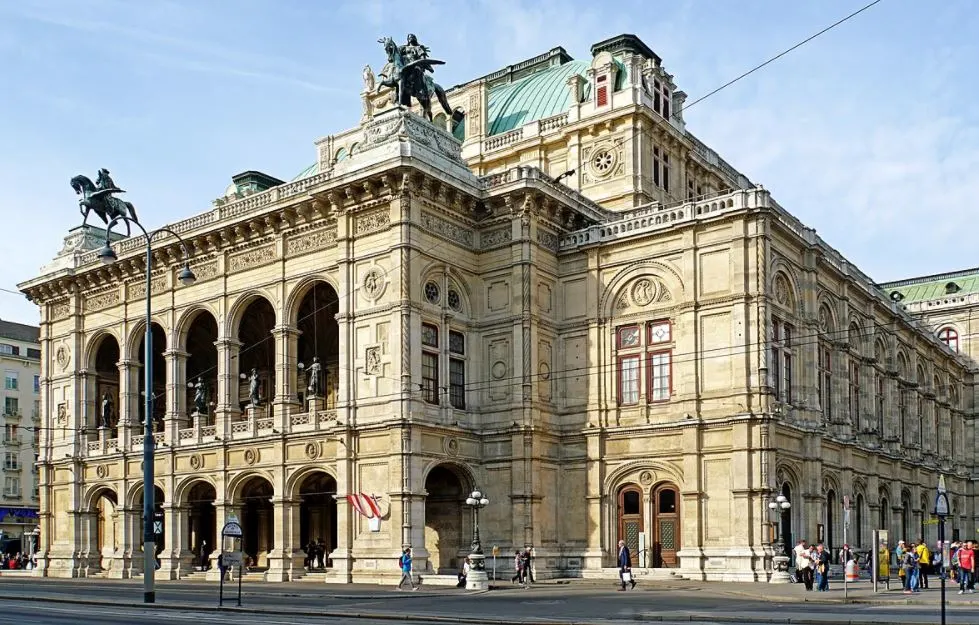
4. La Scala, Milan, Italy
La Scala is the common name of the opera house officially known as “Teatro alla Scala.” It’s located in the second-biggest city in Italy, Milan, and is one of the city’s most famous landmarks. It’s considered to be one of the most prestigious opera houses in the world as the greatest operatic artists and singers have performed at this venue.
The history of this magnificent structure goes back to the year 1778 when it officially opened. It was built because the old theater in the city burned down and was originally known as the “Nuovo Regio Ducale Teatro alla Scala.” Today, it’s one of the leading opera houses and home to various performing arts organizations, including La Scala Theatre Chorus, La Scala Theatre Ballet, La Scala Theatre Orchestra, and the Filarmonica della Scala orchestra.
Official website: Teatro alla Scala
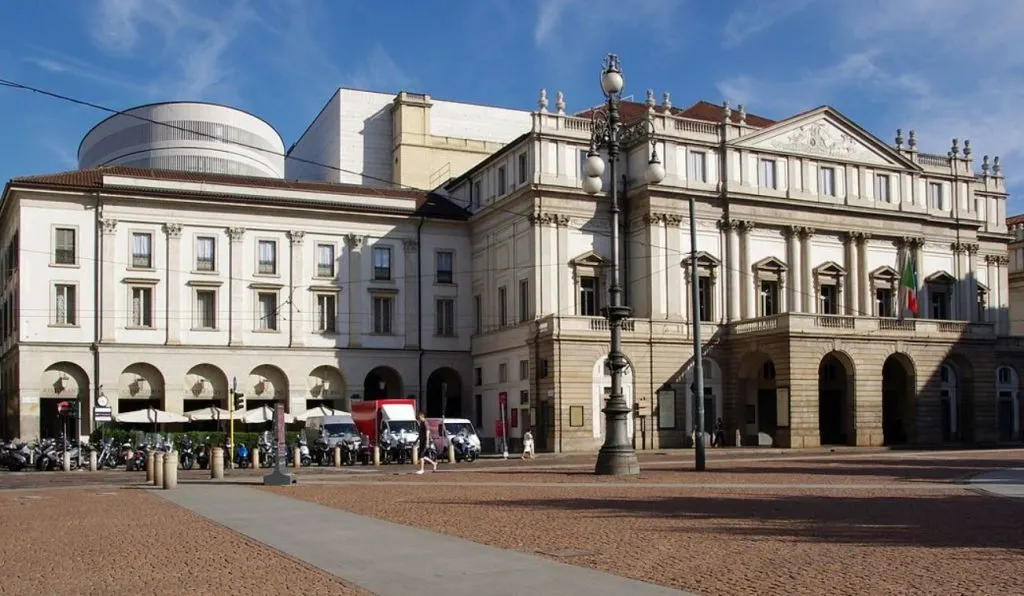
5. Bolshoi Theater, Moscow, Russia
The Bolshoi Theater is another historic landmark in one of the biggest cities in the world, Russia’s capital Moscow. Its Neoclassical façade is considered to be one of the most iconic symbols of Russia and even appears on a 100-ruble banknote. The first version of the building was constructed between 1821 and 1825.
The building is home to some of the oldest ballet and opera companies in the world called the “Bolshoi Ballet” and “Bolshoi Opera.” The building today was seriously renovated in the 2000s, a six-year project that cost a whopping $688 million and that was only completed in 2011. We must say, this has turned this remarkable building into a must-see attraction in Moscow.
Official website: The Bolshoi Theater

6. Teatro Colón, Buenos Aires, Argentina
The Teatro Colón is the most famous opera house in the immense city of Buenos Aires in Argentina, South America. The current version of the opera house was built in the late 19th and early 20th centuries and opened its doors in the year 1908, replacing the original version which was the city’s main theater between 1858 and 1888.
Today, the opera house is considered to be one of the top 10 opera houses in the world and one of the top 5 venues in the world when it comes to acoustics. It also underwent a serious renovation between 2005 and 2010, an enormous project that involved 1,500 workers. It’s fair to conclude that this turned one of the most famous opera houses in the world into one of the best places to enjoy opera and other performances.
Official website: Teatro Colón

7. Teatro di San Carlo, Naples, Italy
The Teatro di San Carlo is the oldest continuously operating opera house in Europe. It was built on the location of 2 former opera houses that have a history dating back to the year 1550. The original version was commissioned in 1737 by the King of Naples at the time, a man from the House of Bourbon who ended up becoming King Charles III of Spain (1716-1788).
Despite being destroyed by a devastating fire in 1816, the original horseshoe-shaped structure still resembles the one built in the 18th century. It was the largest opera house in the world upon completion and has been one of the most famous opera houses in the world ever since. The former glory of the venue was returned after a €67 million renovation project that was completed in 2009.
Official website: Teatro di San Carlo

8. Hungarian State Opera House
The Hungarian State Opera House is the main opera house in the Hungarian capital of Budapest. It’s located in the heart of the city and was constructed between 1875 and 1884. It’s the second-largest opera house in the country with a capacity of up to 1,300 people in its auditorium that is praised worldwide for its excellent acoustics.
The building was designed in the Renaissance Revival architectural style. It also features Baroque elements which add an extra touch to this remarkable architectural landmark in Budapest. Both the exterior and interior are decorated with sculptures and paintings related to the history of art and music in Hungary.
Official website: Hungarian State Opera
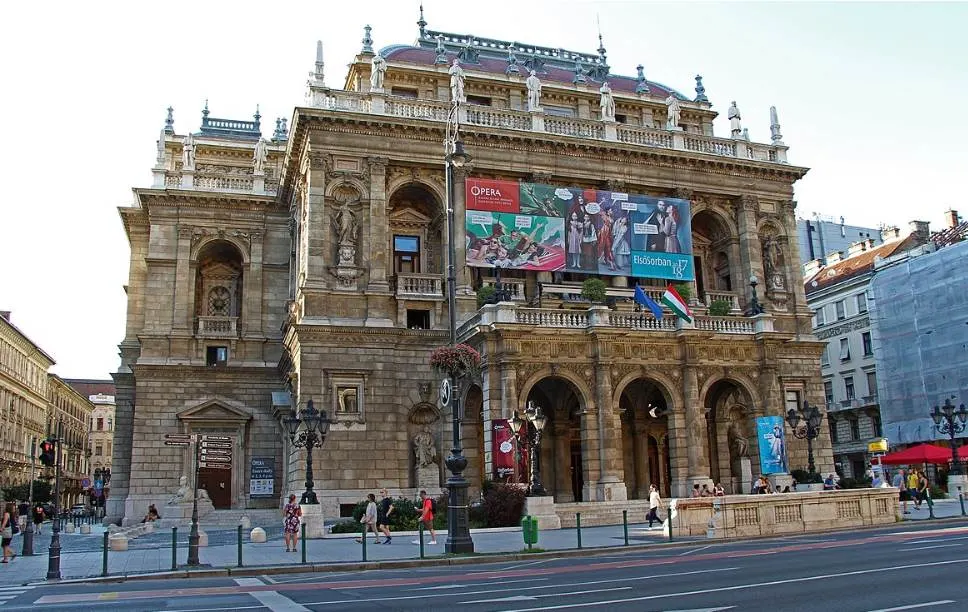
9. Amazon Theatre
The Amazon Theatre is the main opera house in the Brazilian city of Manaus. This city is stated right in the heart of the Amazon Rainforest and was established on the banks of the Amazon River. Manaus experienced great growth during the rubber boom in the late 19th century and this was the period that the opera house was constructed.
It also features a Renaissance Revival design, an architectural style that became popular in the second half of the 19th century and which was inspired by the Renaissance buildings constructed in the 15th and 16th centuries. The most amazing feature of the Amazon Theatre apart from its amazing interior design is the dome which is decorated with 36,000 ceramic tiles in the colors of the Brazilian flag.
Official website: Amazon Theatre
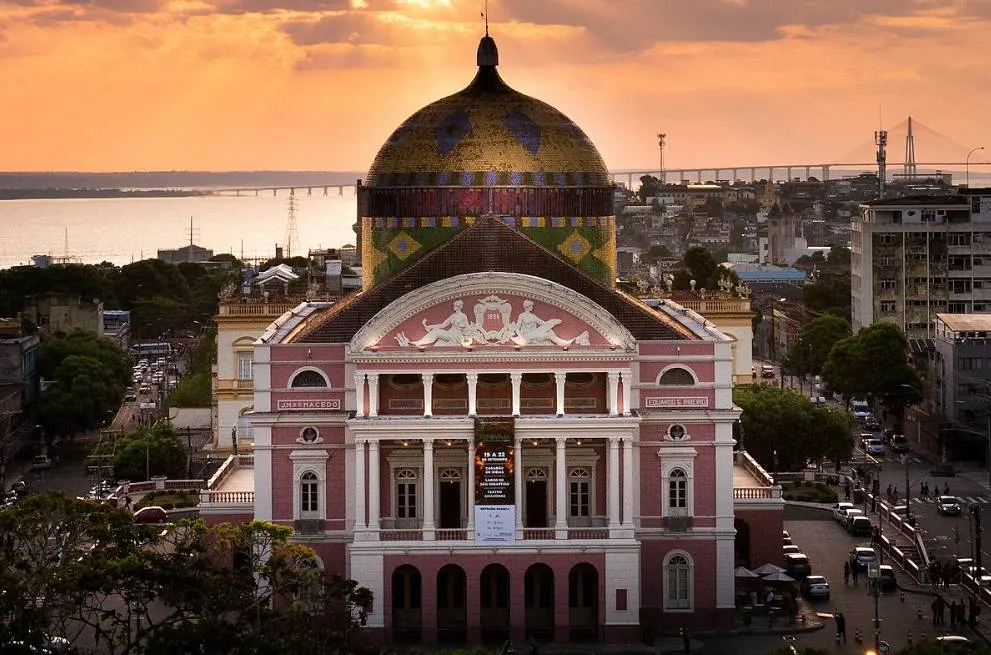
10. Copenhagen Opera House
The Copenhagen Opera House is a beautiful Neo-Futiristic building located in the heart of the Danish capital. It was an incredibly expensive building to construct between 2001 and 2005 as it had a price tag of $370 million, ht equivalent of over $550 million today. The result is one of the most beautiful opera houses in the world.
It was constructed aligned with several other famous landmarks in Copenhagen that are located across the Harbor. This includes Amalienborg, a royal palace complex, and Frederick’s Church, a building that features the largest dome in Scandinavia. The location in the heart of the city on a small island makes it one of the most distinctive opera venues in the world.
Official website: Copenhagen Opera House
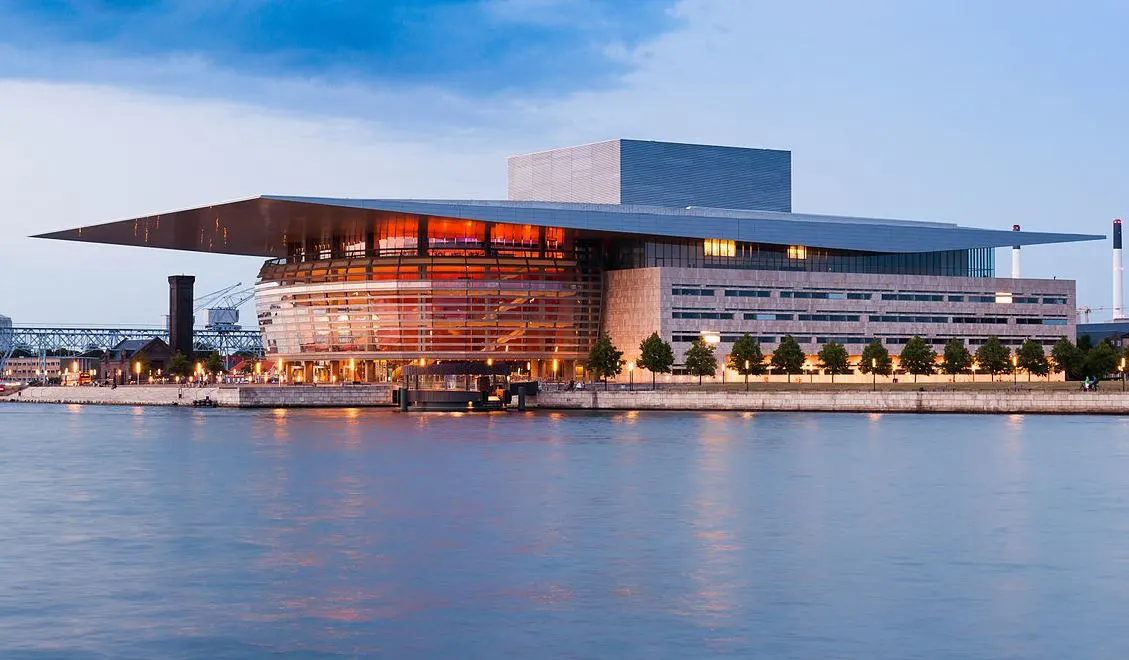
11. La Monnaie
La Monnaie or “De Munt” is an opera house that is located in the heart of Brussels, the capital city of Belgium. Its name is a reference to the former mint building that once occupied this location in the heart of the city. The original version was completed between 1695 and 1700.
The landmark in Brussels that you can admire today is a completely renovated version of the third theatre building that was constructed in this location. It was redesigned in the 1980s and underwent modernization between 2015 and 2017 and remains the most prestigious opera house in Belgium today.
Official website: La Monnaie
